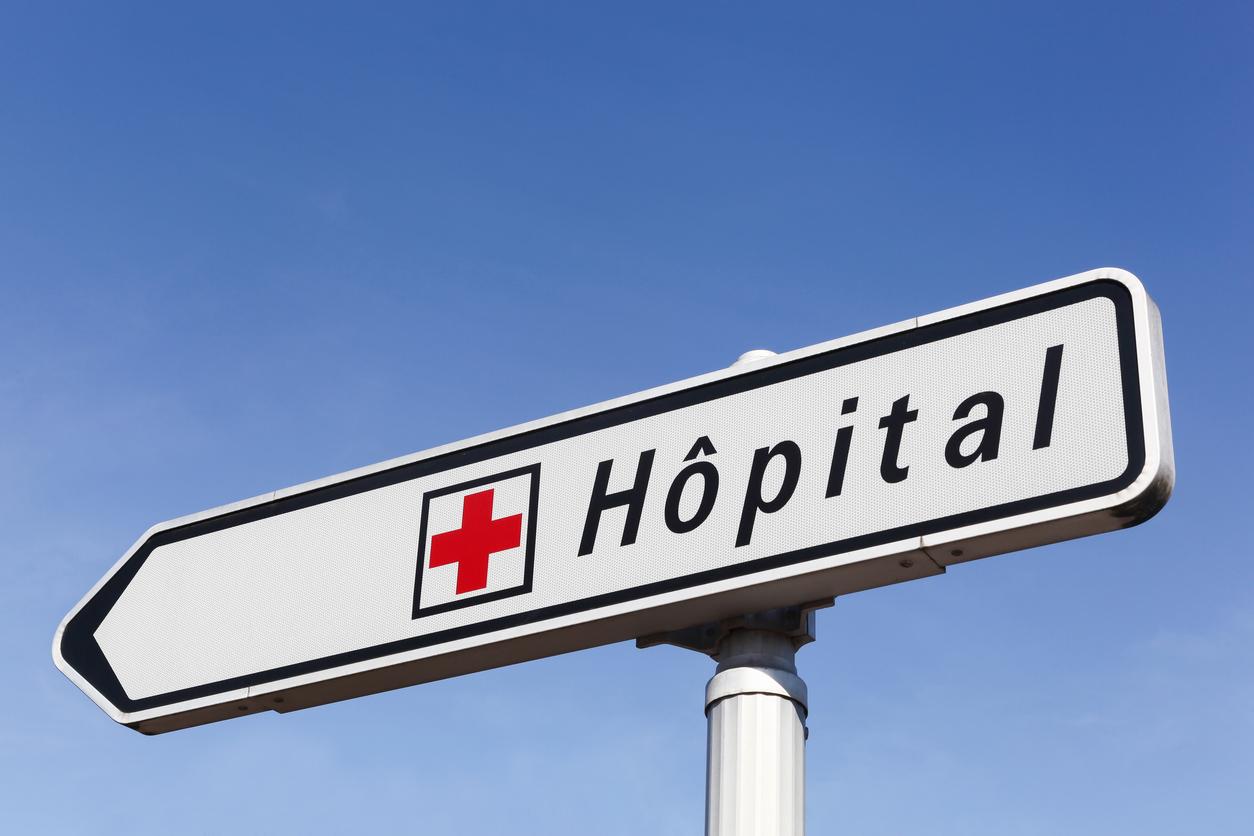In an interview with our colleagues from Europe 1, Agnès Buzin, the Minister of Health noted the inadequacy of the funding system for hospitals in France. The whole system needs to be changed in the opinion of all the actors involved, including the patients. Prof. André Grimaldi gives us his thoughts on health spending and the public hospital.

Doctors and staff on strike, overwork, activity-based pricing, a budget that will only increase at the rate of half of the foreseeable expenses, the hospital is in crisis in France.
The Minister of Health, Agnès Buzyn, spoke on Europe 1, Friday, the need “to invent a new model of financing of the hospital” for “that it is not only a financing which pushes to a disproportionate activity […] We must promote the special skills of hospitals, teaching, research, the ability to provide good medicine, the quality of care ”. It is also a question of “responding to the discomfort expressed in particular by the agents of public health establishments”.
The minister promised that a complete overhaul would be carried out, but noting the magnitude of the task and the total absence of any embryo proposal in her ministry when she arrived there, she did not give any calendar.
Against T2A and “health technocracy”
If she is looking for skills and ideas that are more realistic than those of the “health technocracy” of her ministry, she will have no trouble finding them in the hospital itself, where different health actors devote themselves to continue to do so. ensure humane and quality medicine despite the many administrative obstacles imposed on them.
Seeing that, since its launch, the “activity-based pricing” (T2A) system was going straight into the wall, some have been thinking about it and even discussing it for a long time with a view to involving the entire hospital medical community. to that reflection.
Among these different players in the hospital’s health, some discuss freely on a blog held by Prof. André Grimaldi, renowned diabetologist at Pitié-Salpêtrière, in Paris, and an early attacker of the inadequacy of the logic of the “business hospital” to the management of chronic diseases. He agreed to share his thoughts.
Health expenditure in line with the OECD average
France spends 11% of its GDP overall on health, like Germany, the Netherlands, Belgium, Canada, Switzerland, Austria, Japan … which is much more than England (9 %), but much less than the United States (17%)
In absolute expenditure per capita, France is the 11th among OECD countries. We must therefore stop saying that France is the bad student of Europe or rich countries
France falls back in the rankings
What is true is that in different rankings, France is declining for 2 historical reasons:
- Prevention and avoidable mortality before age 65 (lung cancer continues to increase in women due to smoking): France is at the forefront against endocrine disruptors, rightly, but in the rear for prevention of complications from alcohol and tobacco.
- Social inequalities in health which are also territorial inequalities in health, for lack of having built a local health system based on multi-professional first-aid teams.
Health, a common good
Social security is not an outdated historical model. It was a “brilliant” construction, ranking health among the “common goods”, neither state (Beveridge), nor private (private mutual insurance or not).
It therefore benefits from dedicated revenue (contributions, taxes and specific tax = CSG) and from autonomous management. But the social security expenditure in 1945 was around 2.5% or 3% of the GDP, the population was young and quite healthy and the allowances mainly concerned daily allowances.
Social security was linked to work and therefore not universal. In addition, it was a compromise with private insurers (mutuals).
A drift in governance
The drift is made towards the nationalization of management and the abandonment of entire sections to private insurers, in particular the excess fees in the name of the “hole of the Sécu”! (sector 2 was created in 1980 by Raymond Barre so as not to have to increase the rates for doctors in sector 1).
In the spirit of “common good” health, today it would be
- To distinguish what comes under national solidarity (100% reimbursed by the Social Security), from what does not,
- To apply the golden rule of compulsory balance of accounts by increasing dedicated revenue and / or reducing expenditure,
- To set up co-management (State / professionals / users / social partners).
Organized contradiction
Public hospitals are now experiencing a contradiction (once again intended): they are condemned to profitability, like a private clinic (for profit or not), but they cannot choose their medical activity on the basis of profitability and their staff “benefit” from a guaranteed employment status (which, it is true, some abuse).
Unlike the private sector, public officials are not contractual with a revisable job and a variable salary.
And thanks to our civil servant status, we have kept a freedom of speech and criticism that doctors practicing in private clinics do not have. There is an ESPIC facility where the director can say to “his” vascular surgeon: “I want 500 varicose veins a year! “And the surgeon replies:” good, sir. The CEO has replaced Mandarin!
But there are above all 2 major differences in principle between a public hospital and a private clinic (for profit or not).
The Private must be profitable
A clinic must be profitable and, to do so, it selects its activities, which the public hospital cannot and should not do. A doctor remembers Foch and his transfer to the Institut Mutualiste Montsouris (IMM):
I remember a long time ago, I saw diabetics arriving at the IMM (“they don’t want us anymore!”).
I remember that there was once a question of shutting down the internal medicine at the IMM. I remember that at the IMM, urology patients were sorted by telephone by a “regulator”. In return for this, IMM today has an excellent medical reputation (including diabetology).
I remember that when he arrived at Saint-Joseph, the new director automatically closed the AIDS service (forgetting to warn the patients) who were therefore admitted to the public hospital.
The vaginal birth is not profitable. As a result, private maternity hospitals are closing or pushing the indications for caesarean sections …. Conversely, the public hospital cannot go bankrupt and be sold to the private sector, to carry out a real estate transaction and / or to join the international chains of private clinics. (I remember FOCH’s fear of being bought by Générale de Santé, itself bought by Ramsay)
It is no coincidence that the therapeutic education of the patient was born, fundamentally, and developed in the public hospital, which had a global budget, and not in private clinics. It is not the fault of their doctors, but of the funding system.
The public pursues a lasting mission
The public hospital must be efficient, not from the point of view of the establishment, but from the point of view of society (and in this case of Social Security). The current system which aims at the profitability of the establishment, regardless of the long-term interest of the Social Security, is “normal” for a private clinic but is deeply aberrant for a public hospital. “I was not asked to save the Social Security but to straighten the accounts of my establishment”, confided to me a director of ESPIC.
From this point of view, the last health law defining the public service by its global missions and its obligations and not by its statute, opened the way to the progressive change of statute of the public hospital, starting with the CHUs (like the proposed François Fillon). Some CHU directors and some surgeons in public hospitals aspire to it. The former would have more power and the latter would be better paid.
Rediscover the philosophy behind the creation of CHUs
Finally, the great Debré reform of 1958, which created the University Hospital Centers, has seen its faults outweigh its qualities since the end of the 1980s, as some of its founders analyzed at the Caen conference in 1996 ( organized by Dean Gérard Levy): cut off from the city, often unjustified separation between PH and PU-PH, devaluation of the clinic and teaching in favor of scientific publications, insufficient resources for clinical research, confusion and multiplication of tasks (care, research, teaching, management, public health) which could no longer be performed by one person, but by teams.
Today in a CHU there is no reason why a head of department should automatically be a PU-PH rather than a PH … In Nantes, the endocrinology department has a PH as head of department and includes 2 PU PH).
In short, we should not seek to bring together the self-proclaimed “elite”, but the entire hospital medical community. Nostalgia is a bad advisor!
But, according to André Grimaldi, the absolute urgency seems above all to put an end to the “hospital-company” put in deficit by a progression of the ONDAM lower than the programmed progression of the charges!
.















